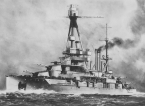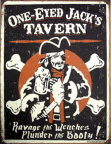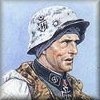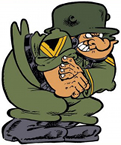Cuttlefish
Posts: 2454
Joined: 1/24/2007
From: Oregon, USA
Status: offline

|
Analysis: the game
From the beginning I decided I would fight this war mostly along historical lines. The result, I think, was a war that went about the way WWII might have gone had the Allies been defeated at Midway and the Coral Sea. Japan would have lost all the same, it just would have taken a bit longer and cost more.
That by 1945 the game was back on roughly the same timeline as the real war can, I think, be attributed to the accelerated pace of operations possible in WitP.
So no invasions of India, of Australia, Fiji, Hawaii, or anything like that. My idea was to establish a defensive perimeter as protected from Allied four-engine bombers as possible and dig in. To that end I decided that I had to have Port Moresby; my opponent could bomb it all he wanted to from Australia while I protected it with safe bases at Lae and Rabaul. And I needed New Caledonia and the New Hebrides to deny my opponents bases in range of the Solomons. Nanomea and Baker would protect the Gilberts.
In the DEI Timor was a must, and that was the best I could do there. In China all I really wanted to do was clear the Changsa – Wuchow rail line and leave it at that, though I wanted to maintain a certain amount of pressure there and was willing to be opportunistic.
Expansion: I proceeded swiftly in Malaya, the Phlippines, and the DEI, more slowly in the Pacific. I delayed invading Port Moresby, Noumea, and Efate until late February; I might have moved sooner but wanted to stay closer the that “historical feel.” My early attacks went well except when I tried landing at Mersing. I suffered heavy losses in ships and it ended up doing nothing to shorten the Singapore campaign.
Wolff (wolffpack) did not do a Sir Robin. He kept striking back, often at unexpected (which is to say, good) times and places. A few times I got lucky and a few times I was well prepared. He didn’t always succeed but it did keep me honest.
The first carrier battle of the game took place near Gardner Island and I flat-out got lucky there. I knew there were American carriers down around Fiji and took KB south to look for them. What happened, as I learned somewhat later, is that Wolff had Enterprise, Yorktown, and Saratoga there. Hornet and Lexington were en route to join them. When KB was spotted by search planes out of Fiji I jinked my carriers to the southeast to try and break contact – and ended up almost right on top of Hornet and Lexington. Boom. Another turn or two and he would have had all his carriers together. In a Nik mod game like this one that would have almost certainly meant that my carriers would have taken a lot of damage even if I won.
My campaign in China proceeded without any real problems. In Malaya Singapore fell on 21 January and I turned my forces north. In Burma I captured the bases along the line of the Irrawaddy, from Rangoon to Myitkyina. I launched thrusts at Ledo and Akyab but was turned back in both places. At that point I established my defensive line and started digging in.
Early Allied counterthrusts: Wolff struck at three places in the Pacific in late spring ’42; Wake, Nanomea, and Gili Gili. In all cases he timed his attacks carefully, waiting for KB to be busy elsewhere, and in fact for a while he had me reacting to him, not the other way around.
Nanomea was destined to be a non-factor in the game. Wake was, I think, my single biggest error. I had not moved swiftly enough to garrison it. I made him pay a heavy price to maintain the place when he took it back but I could not keep up a tight enough blockade and took too long to counter-attack. When I finally did, in June ’42, I suffered my first major defeat.
For a long time Gili Gili looked like a mistake on his part. He lost a pair of British carriers in the operation and then could do nothing with the base. It became a training ground for Japanese bombers; any fighter he tried to move there was swiftly destroyed and he lost a lot of ships and planes trying to turn it into a viable base. Not until early ’43, when he was able to use better aircraft, was he finally able to put it into operation. When he did, though, it was his key to cracking the New Guinea/Bismarck Archipelago defenses.
Allied offensive operations begin: Wolff’s first attempt at a major counterthrust was Timor (specifically Koepang) in January ’43. In his defense it was the first major amphibious invasion he had undertaken in WitP and I think many would agree that this kind of operation is one of the harder things to master in the game. Koepang had a full regiment plus support troops behind level 9 forts. I also had a rapid reaction force nearby (I think Balikpapan, don’t remember for sure now), consisting of a division and fast APs to carry them, ready for something of the sort. At that he still might have succeeded if I hadn’t won a series of carrier victories against him. Once he lost control of the sea around Timor it was all over.
The defeat stalled his offensive efforts for months afterwards. On the positive side for him he was able to skillfully extract most of the invasion force.
As Wolff slowly began putting pressure on Rabaul I used the extra time to fortify the inner defenses in the Pacific. I was not able to stop him but I was able to make every invasion a costly major undertaking.
Turning point: Wolff’s rebuilt carrier forces were finally able to challenge me again in May ’43. I decisively lost a major carrier battle near the Santa Cruz islands and the door was at last open for major Allied offensive operations in the Pacific. He took New Caledonia and the New Hebrides, then bypassed Rabaul by thrusting up through Lae and capturing the Admiralty Islands. From there he cleared the north coast of New Guinea and began island-hopping in earnest.
Wolff had a lot of time to make up and he compensated by thrusting directly for the heart, do not pass Go, do not collect $200. It was an expensive strategy but he made it work. He captured Eniwetok to shorten his supply lines and then moved up to take bases in the Carolines and Marianas. From there it was Iwo Jima, Amami and Okinawa, and then Japan itself.
My strategy during this period was to resist long enough to make it cost him and then withdraw my naval and air assets before they were exhausted, always keeping and rebuilding a reserve. It worked well; by ’45 he was out of trained Navy pilots and by the end of the war I think he was hurting for capital ships (not as badly as I was, of course!).
My cut-off bases never quite “withered on the vine.” Single small freighters kept up a shuttle run from Ominato, down past Marcus, and between his bases at Eniwetok and Guam/Tinian to such places as Truk, Lunga, and Tarawa. I was thus able to maintain positive, if low, supply numbers in these places. Some of the ships were lost but many made it there and back safely.
The Road to Mandalay: Burma was, I think, his biggest frustration in the game. Again and again he thrust against the Irrawaddy Line, when one attempt failed he would shift his point of attack and try again. Several times he almost succeeded but I had divisions behind the line rotating to cover trouble spots and I was working on interior lines. He was never able to break through.
I also had the entire coast fortified, from Moulmein to Alor Star. Every base was covered by at least a division or a regiment and there was a reserve at Bangkok. This, and the fact that Andaman was like a bone in his throat, kept him from trying a flanking maneuver.
He finally, in ’45, used the British fleet to assault Alor Star. His losses were horrible; what was left of my carriers showed up in the Gulf of Siam and sank several cruisers and a lot of destroyers and transports. To cover what was left he had to move his carriers right next to the base. While they were pinned there Japanese battleships snuck up from Singapore and intercepted them by night. All four carriers present were knocked out of the war – armored flight decks don’t help much against 14” shells. This was my favorite action of the entire war, I think.
Still, sheer weight of numbers prevailed and he soon took the base. When that happened I withdrew from Burma to shorter lines (with prepared level 9 forts) along the Salween River (Moulmein and Rahaeng). Other forces moved south to Songkhla. Thailand was thus held, though he quickly overran Malaya and by the end of the game was knocking on the gates of Singapore.
Land War in Asia: in the first few months of ’42 I cleared the Changsa – Wuchow road, as mentioned. During the rest of ’42 I also captured Ichang and Homan, but further thrusts (at Sian and Yenen) were turned back. Thereafter I reverted to the defensive and China was quiet for the rest of the war.
End Game: Hibiki was heavily involved in most of the doings towards the end of the game, so I don’t think I need to do much of a recap here. The only real mystery, to me at least, remains Operation Longbow. It might have worked; I got caught with my pants down and with strong follow-up forces and a better blitz of my air bases on both sides of the Korea Strait it could have been impossible to dislodge the invaders. I have no idea what happened on the Allied side; communication with Wolff has been sporadic since his deployment to Iraq.
This, I think is a good place to thank my opponent once again for the game he gave me. He was gracious in victory, cheerful in defeat, always fair, and always consistent. I would gladly play him again and would recommend him as an opponent to anyone. Here’s to you, Wolff, for making this saga possible. Come home safe.
|
 Printable Version
Printable Version


























 New Messages
New Messages No New Messages
No New Messages Hot Topic w/ New Messages
Hot Topic w/ New Messages Hot Topic w/o New Messages
Hot Topic w/o New Messages Locked w/ New Messages
Locked w/ New Messages Locked w/o New Messages
Locked w/o New Messages Post New Thread
Post New Thread